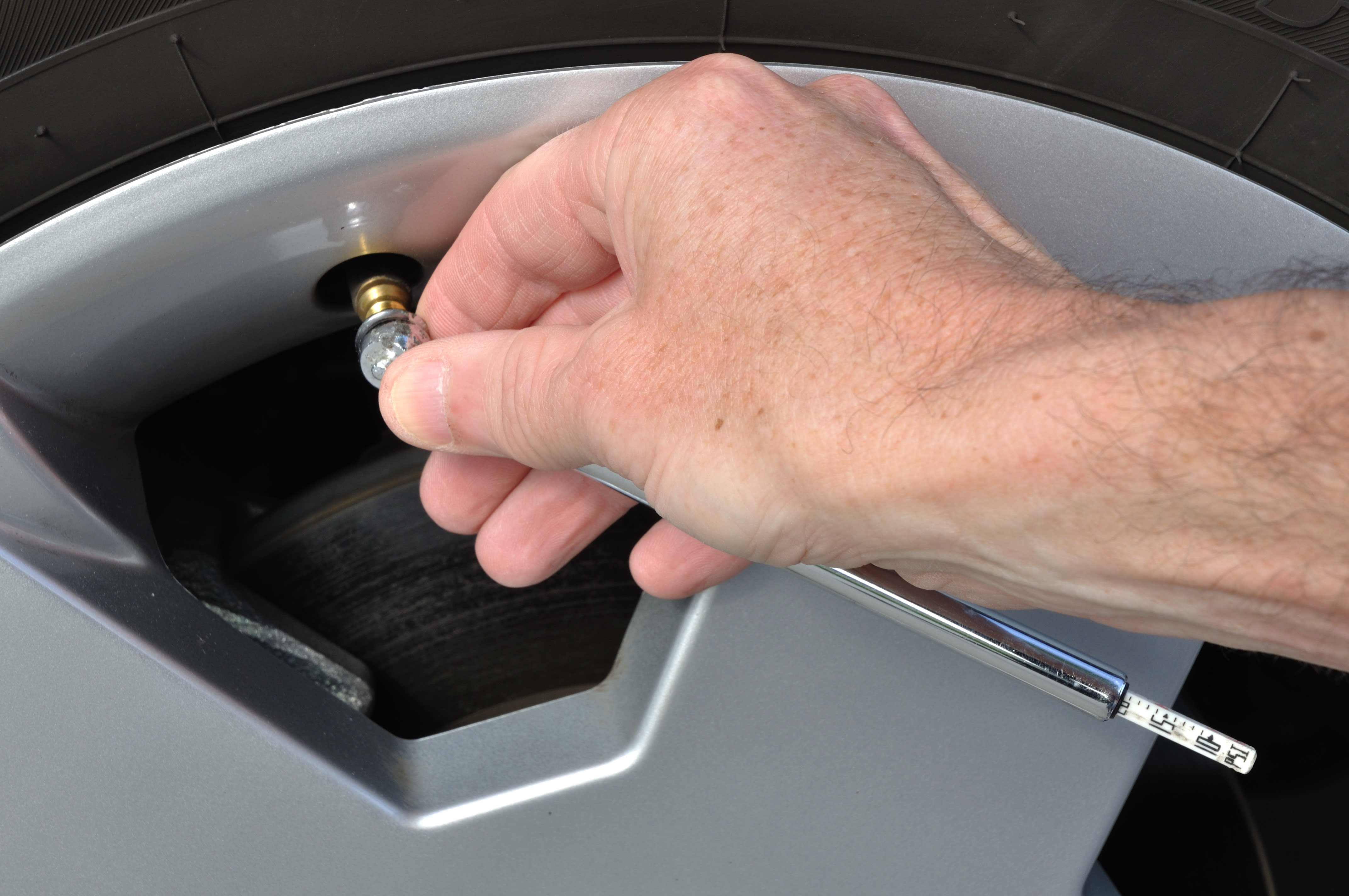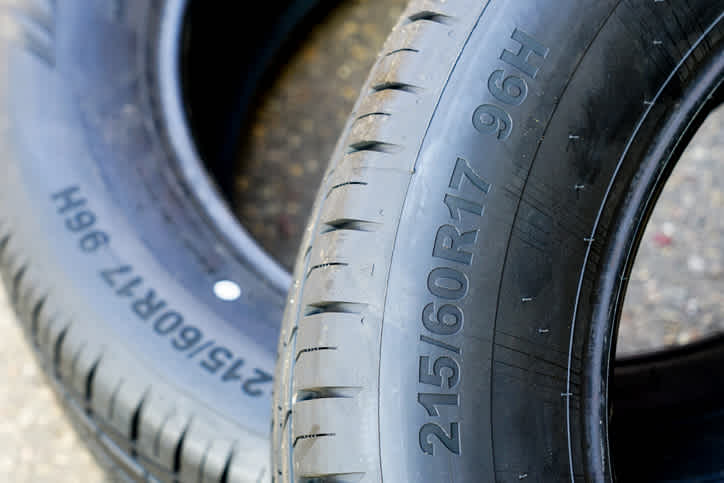Tire maintenance & safety
Why do some tires last longer than others?

Free shipping
Best price guarantee
Special pricing
Financing with Resolve
Easy returns
Tire maintenance & safety

The longevity of your tires plays a crucial role in ensuring a safe and comfortable driving experience. Tires that wear out prematurely not only compromise your vehicle's performance but also put a dent in your wallet.
Understanding the factors that influence tire lifespan can help you make informed decisions when selecting and maintaining your tires. By choosing the right tires and adopting proper care practices, you can maximize their life and enjoy optimal performance for years to come.
In this article, we'll explore the key elements that determine how long your tires will last, from the quality of materials used in their construction to your driving habits and maintenance routines. Let's dive in and discover what makes some tires outlast others.
Tire longevity is determined by a complex interplay of factors, ranging from the quality of materials used in their construction to the way you drive and maintain your vehicle. Let's take a closer look at the key elements that impact how long your tires will last.
The quality of a tire is directly linked to its longevity. Higher-quality tires are crafted using more durable compounds and advanced technologies, allowing them to withstand the rigors of the road for longer periods. These tires often feature:
It's important to note that tires engineered for specific performance needs may have different expected lifespans. For example, fuel-efficient tires designed to reduce rolling resistance may wear faster than standard all-season tires. Similarly, all-terrain tires built for off-road use may have shorter tread life due to their aggressive tread patterns and exposure to harsh conditions.
Your driving habits and the conditions you subject your tires to play a significant role in determining their lifespan. Aggressive driving, frequent heavy loads, and rough road conditions can all take a toll on your tires, leading to premature wear and reduced longevity.
Driving style: Hard acceleration, sudden braking, and sharp cornering put extra stress on your tires, causing them to wear faster. Adopting a smooth and balanced driving style can help extend tire life.
Vehicle load: Consistently carrying heavy loads or exceeding your vehicle's recommended weight capacity can cause your tires to wear unevenly and deteriorate more quickly.
Road conditions: Driving on rough, potholed, or debris-strewn roads can lead to tire damage and accelerated wear. Gravel, dirt, and other abrasive surfaces also contribute to shorter tire life.
Proper tire maintenance is essential for mitigating the impact of these factors and promoting even wear. This includes:

Maintaining correct tire pressure: Underinflated or overinflated tires wear unevenly and are more susceptible to damage. Check your tire pressure monthly and keep it at the manufacturer-recommended level.
Regular tire rotations: Rotating your tires every 5,000 to 8,000 miles helps distribute wear evenly across all four tires, preventing any single tire from wearing out prematurely.
Wheel alignment and balancing: Misaligned wheels cause uneven tire wear and handling issues. Have your alignment checked and adjusted as needed, and balance your tires when rotating them or if you feel vibrations at certain speeds.
By understanding the factors that influence tire longevity and taking proactive steps to mitigate their impact, you can extend the life of your tires and enjoy safer, more reliable performance on the road. Investing in quality tires from reputable brands and practicing proper maintenance habits will pay off in the long run, providing you with better value and peace of mind behind the wheel.
Tires generally fall within a lifespan range of 40,000 to 70,000 miles, depending on several factors that influence their wear and durability. This range is not arbitrary—it's based on the design and engineering of the tires, which manufacturers develop to meet specific performance standards and consumer expectations. The variability in lifespan underscores the importance of considering the unique demands of your driving environment and habits when selecting tires.
A tire's longevity hinges on several critical elements, each contributing to how effectively and efficiently it performs over time. Different combinations of these factors can significantly sway the actual mileage you get from your tires:
Driving behavior: Maintaining a steady pace and avoiding unnecessary rapid maneuvers helps reduce stress on tires. Opting for a more relaxed driving approach can significantly slow down tread wear, enhancing the tire's lifespan.
Environmental conditions: Tires experience varying rates of wear depending on weather conditions. Warmer climates can lead to increased tread wear due to heat, whereas colder environments demand tires that can handle low temperatures without becoming brittle. Choosing tires suited for your region's climate can optimize their performance and durability.
Upkeep and care: Consistent tire care practices are vital. Regularly checking and maintaining proper inflation levels, ensuring timely rotations, and addressing alignment issues promptly help maintain even wear, extending the tire's useful life.
Manufacturers often provide treadwear warranties, offering a useful benchmark for expected tire life under normal conditions. These warranties serve as a promise of durability and performance, allowing consumers to gauge the possible lifespan of their purchase. However, it's crucial to recognize that warranties are contingent on following recommended maintenance practices and driving within standard conditions.
Treadwear warranties typically specify a mileage number—indicating the approximate distance a tire can travel before the tread wears out. Yet, real-world conditions can vary greatly, meaning some drivers might exceed the warranty mileage while others may not. Understanding these warranties helps consumers make informed decisions, ensuring they select tires that best match their driving needs and conditions.
Timely tire replacement is vital for ensuring safety and maintaining optimal vehicle performance. Understanding specific indicators can help determine when your tires have reached the end of their service life.
Checking tread depth is essential for assessing tire condition. As the tread wears, the tire's ability to provide traction decreases, especially in wet conditions. The quarter test offers a simple method: insert a quarter into the tread grooves with Washington's head facing down. If the top of his head is visible, it's time to consider new tires. Additionally, keep an eye out for wear patterns like feathering or scalloping, which can suggest issues such as unbalanced tires or faulty suspension components.
The age of a tire is just as important as its tread depth. As tires age, the materials within them can weaken, potentially leading to failures. It's advisable to inspect tires that are six years old or older, even if they seem to have sufficient tread. Signs of aging include sidewall cracking, blisters, or other visible deformities, indicating compromised structural integrity. Regular checks for these signs help prevent unexpected tire failures and ensure continued safety on the road.
Effective tire maintenance is essential for maximizing the lifespan and performance of your tires. By adhering to a regular maintenance routine, you can prevent premature wear and ensure your tires remain reliable throughout their service life.
By incorporating these maintenance practices into your routine, you can significantly enhance the life and performance of your tires. Regular attention to tire health not only ensures a safer driving experience but also helps you get the most out of your investment.
The process of selecting tires demands more than a cursory glance at brand names or price tags. A thorough evaluation involves understanding the ratings for treadwear and the warranty specifics provided by the manufacturer. High treadwear ratings indicate that the tires are constructed with robust materials designed for long-lasting performance. When shopping for tires, comparing these ratings alongside warranty conditions offers a clearer picture of potential longevity and value for your investment.
Identifying your driving patterns and the typical conditions you face is vital when choosing the right tires. Performance tires and standard tires cater to different needs and offer varying durability. Performance tires deliver enhanced handling and grip, suitable for dynamic driving or high-speed conditions, yet they tend to wear faster than standard all-season options. If your routine involves mostly city or highway driving, an all-season tire might be more appropriate. For those who venture off the beaten path or encounter varied weather, all-terrain or winter tires offer specialized benefits without compromising on longevity.
Harnessing the power of consumer feedback and expert evaluations can greatly aid in your tire selection process. These resources provide firsthand accounts and professional insights into a tire's real-world performance and durability. Reviews often reveal common strengths or weaknesses, while expert tests offer unbiased assessments of how different tires measure up. By blending these insights with technical specifications, you can confidently choose a tire that aligns with your driving habits and expectations. Investing in quality tires from reputable brands ensures durability and enhances your driving satisfaction.
Top tire brands like Bridgestone, Continental, and Pirelli are renowned for setting high standards in durability and performance. These brands often deliver tires that can exceed expectations, achieving between 70,000 and 90,000 miles of tread life. Such longevity is a result of substantial investments in cutting-edge technology and materials, ensuring that their products perform consistently and reliably over extended periods. The emphasis on advanced engineering and superior construction means that these tires not only offer durability but also maintain excellent performance throughout their lifespan.

Budget tires, though more affordable, typically offer a shorter lifespan compared to their premium counterparts. They generally range from 40,000 to 50,000 miles, even with meticulous maintenance. This difference stems from variations in materials and manufacturing processes, which can affect overall wear and performance. However, for drivers who cover fewer miles annually or have less demanding driving conditions, budget tires can serve as a practical choice without significant compromises on safety and functionality.
Learn more about budget vs premium tires
Choosing the right tires involves weighing the benefits of longevity against initial costs. Premium tires, while more costly upfront, may prove economical over time due to their extended lifespan and superior performance attributes. For those who prioritize long-term value and reliability, investing in high-quality tires often results in fewer replacements and consistent performance. Conversely, budget-conscious drivers might opt for more economical options, focusing on regular maintenance to maximize the lifespan of their tires, aligning with their specific driving needs and financial considerations.
This approach helps ensure that tire selection is both strategic and aligned with individual priorities, providing a balance between cost and performance.
Choosing the right tires and maintaining them properly can significantly impact their longevity, ensuring you get the most out of your investment. By understanding the factors that influence tire life and making informed decisions, you can enjoy safer, more reliable performance on the road. When you're ready to find the perfect tires for your vehicle, shop for tires online with us and discover the best deals to keep you rolling with confidence.
Search By